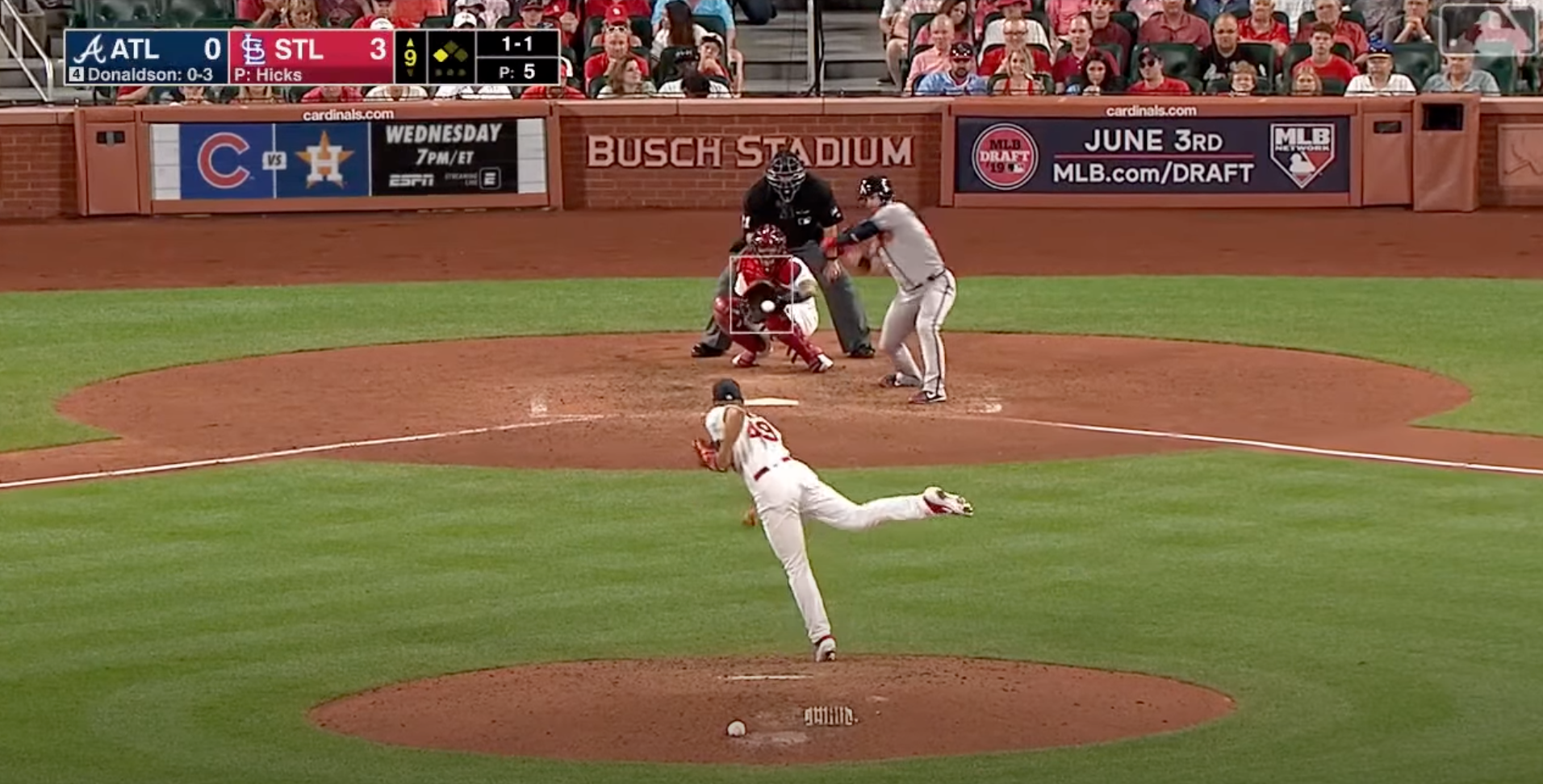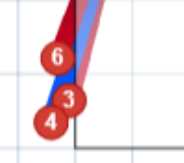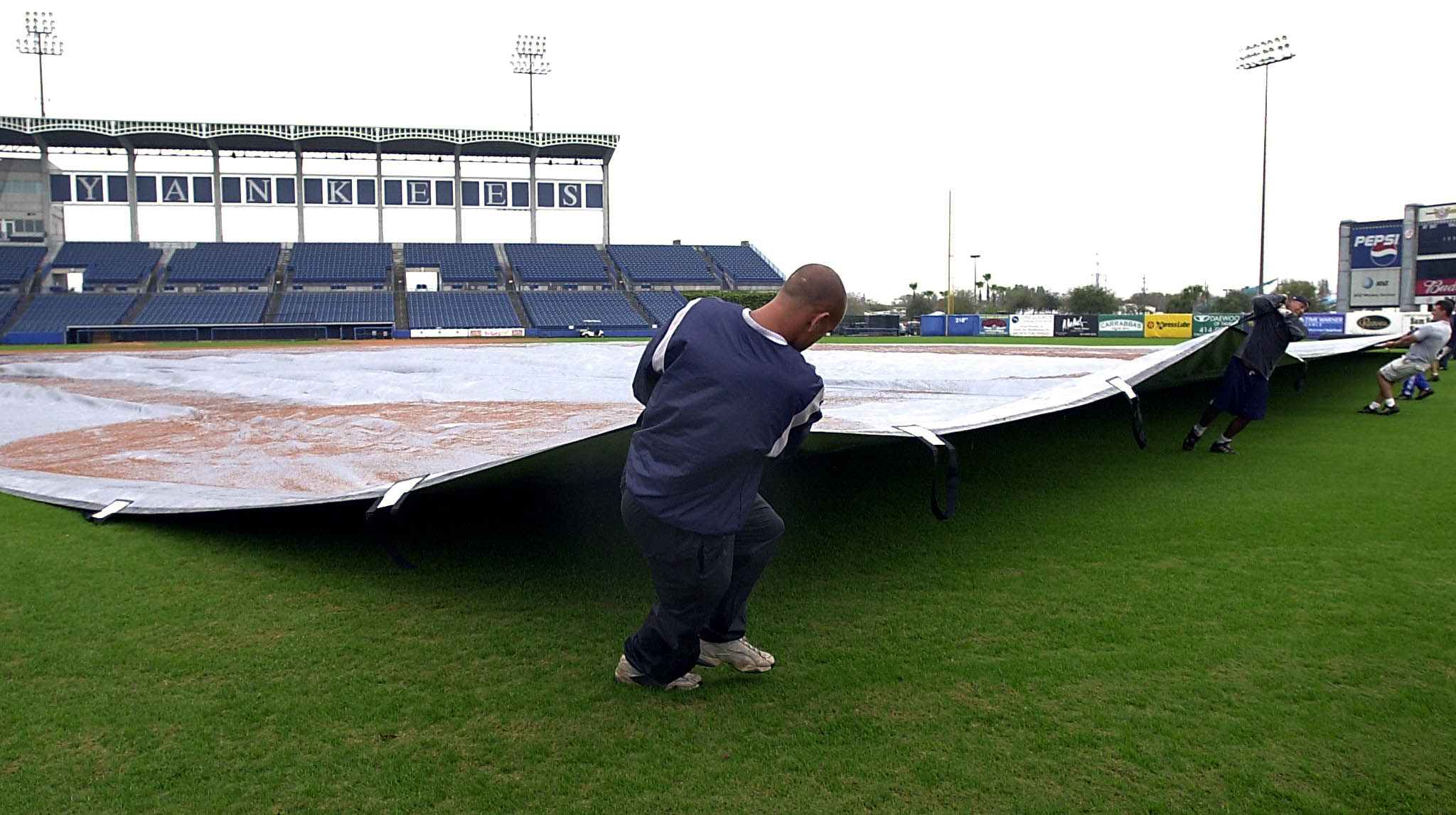Defector has partnered with Baseball Prospectus to bring you a taste of their work. They write good shit that we think you’ll like. If you do like it, we encourage you to check out their site and subscribe.
This story was originally published at Baseball Prospectus on November 9.
The season is over. A champion has been crowned, a parade has been (hastily) conducted. Now begins the winter of our discontent: Hall of Fame discussions, griping over awards, a possible lockout and transaction freeze. More importantly, now is also the time to take stock of the game and its presentation, and throw the K-Zone (and its horrid brethren) in the damn garbage. If you don’t know what I’m referring to, well, you do because it’s become omnipresent on just about every broadcast. That thin, hovering rectangle over home plate that purports to represent the official strike zone, but isn’t the official strike zone, nor what the umpire actually calls:
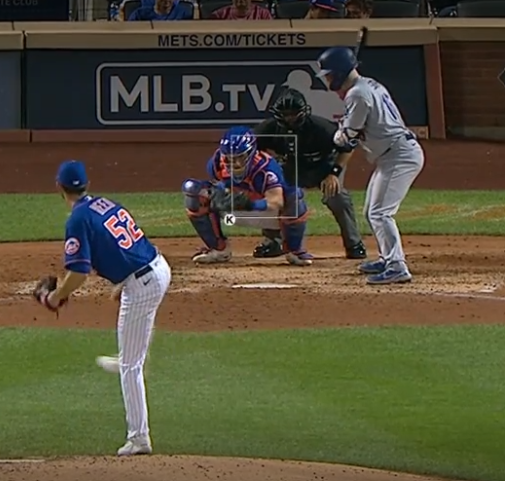
Beginning in 2015, ESPN began using the K-Zone for every pitch, viewing it as a differentiator between their broadcast and everyone else’s. (They hadn’t invented Interviewing Someone During Every At-Bat yet.) It might have been unique at the time. Now, as the result of some mutually-assured destruction, it actively makes the act of taking in every game worse.
It’s anecdotal evidence, to be sure, but it seemed the rate of complaints about the strike zone in 2021 were at an all-time high. (Complaints about the strike zone when one’s own team is pitching, notably, remain static.) Also waxing: our ability to measure how many mistakes there were and imagine their ramifications through things like superimposed strike zones, MLB gameday, and Twitter accounts that score umpires based on their called zones.
The problem, at least as it pertains to the televised zones, is that K-Zones portray neither the strike zone defined in the rulebook nor the one the umpire is calling. And while many view that particular point of differentiation as obscene in and of itself, the latter, as called, is at least an umpire’s best attempt to enforce the former (perhaps unsurprisingly, the proliferation of feedback has produced perhaps the most consistent zones, across umpires, on record). The superimposed zone is something else altogether, and it is slowly driving people insane.
Without wading into whether an automated strike zone is for the best or not, it is decidedly not something we have right now. Despite trends toward uniformity and the rulebook zone, we also know that the shape of the zone varies not only umpire to umpire but count to count. Constantly displaying a superimposed zone that is neither what is being called nor what is supposed to be called shifts the viewer’s attention from the game that’s actually happening to a hypothetical one that could be happening, but isn’t.
It’s an active counterfactual that only serves a grievance culture we’re frankly all too familiar with everywhere else in our lives. It no longer becomes about the failure of the batter to know the zone or the execution of the pitcher, or even the framing skill of the catcher we’ve learned to appreciate, but instead the blame gets placed on umpires for calling strikes based on a rectangle they can’t see and which doesn’t correspond to the zone they’re intending to call in the first place.
Technology has a habit of ruining our brains like this. In his book, How Music Works, David Byrne catalogs the history of recorded music, and how much the first word in that phrase affected the second one. When Thomas Edison popularized sound recordings in version two of his patented phonograph, the effects were immediate and widespread. The wax records of the time could only store 3 ½ minutes of music per side, making existing classical music virtually unmarketable, and forcing songs into adapting the length that now, to our generation, seems pre-ordained.

It also changed how music was played, and what was going to be used to play it. Instruments with heavy low notes tended to vibrate the records as the impressions were made into the wax, forcing them to play farther away or be eliminated entirely. To make up for the distortions in the surface of the record (and thus in the sound), vibrato, a technique rarely used prior (and even seen as kind of tacky) became standard; if a bad record made a perfect note sound wrong, a warbling voice would at least still hit the range often enough for the brain to fill the correct note in. Now, singing devoid of any vibrato sounds wrong, or at least automatically twee.
As baseball has evolved, and the technology of filming it has done the same, we as fans have been equally transformed. Old footage is disarmingly centered from the press box, above and overhead; in an era of balls in play (and less consistent fielding), having the angle of the groundball out made the most sense. Now, even before the K-Zone, we’re perched over the pitcher’s shoulder, squinting fiercely at the most important point in the modern baseball game, the black of the outside corner of the plate. The K-Zone, in that sense, is just a yellow highlighter on that unchecked obsession, and equally garish. It is the glowing puck, except the light never goes out.
Not to sound entirely like An Old, but there is (was?) a certain beauty in learning the umpire’s strike zone alongside the hitters. Feeling out what would be granted a strike and what wouldn’t be, and understanding why batters or pitchers felt shorted by certain calls or non-calls later in a game. The zone itself became almost a shared, invisible puzzle to solve, pitch by pitch. They’d established what a strike was or wasn’t over the course of the outing, and the umpire was no longer abiding by the same zone. Inconsistency was the enemy, more so than the umpire themself.
Now everyone is feeling shorted all the time. Take this called strike three from Ron Kulpa in Game 2 of the World Series. This is the first inning, but Kulpa (who generally has a big and inconsistent zone) is already getting flack for a pitch that … without the superimposed zone … likely wouldn’t cause much ire among fans:
You have now entered the Ron Kulpa zone. pic.twitter.com/YCU0e07QKp
— Rob Friedman (@PitchingNinja) October 28, 2021
It’s the lefty strike that’s existed since the days when left-handers were drowned as witches. Now, instead, the graphic was everywhere, stoked (intentionally or not) by accounts that thrive on the engagement these borderline calls generate. The pitch above is pitch six on on the Gameday feed below:
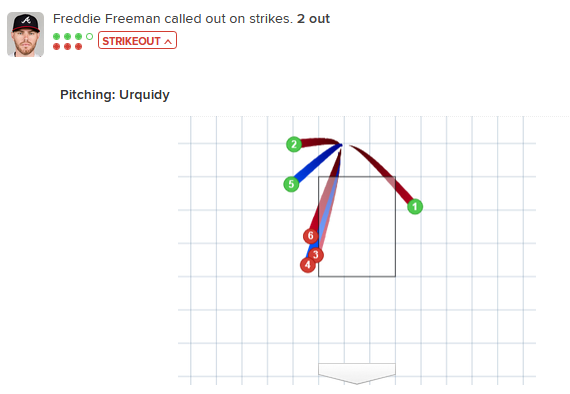
Is the outer edge of the (icon representing the) ball grazing the edge of the zone?
If it’s this close should we make a federal case out of it? Pitch four was also a called strike, certainly further from the zone. It’s the top of the first inning and while that might be a bad call relative to the zone, if Kulpa maintains that same strike zone consistently (a load-bearing “if” to be sure), is there any real issue with the zone? All three of the strikes above were called. Should Freddie Freeman have adapted to the two pitches called strikes already, expanded his zone and tried to fight it off?
Major League Baseball certainly needs to care about this level of granularity in their evaluations of their umpires. It’s not clear to me that fans need to, though, especially as umpires have improved and tightened their strike zones of late. The constant presence of a box that neither represents the actual zone nor the actual zone as perceived by the person making the call only serves to inflame fans, showing them a version of something that doesn’t exist, and asking them to react to it as though it should.
It doesn’t help our understanding of baseball as it is happening, and mostly was not designed to. One of the worst aspects of attending a game in person is the drunk guy in the 18th row up the third base line, who believes he knows exactly what is or isn’t a strike. Now, thanks to the always-benevolent march of technology, we’re all that guy. The K-Zone was a broadcast differentiator that no longer differentiates, but only makes the experience more combustible and aggravating. It’s time to get rid of it.
